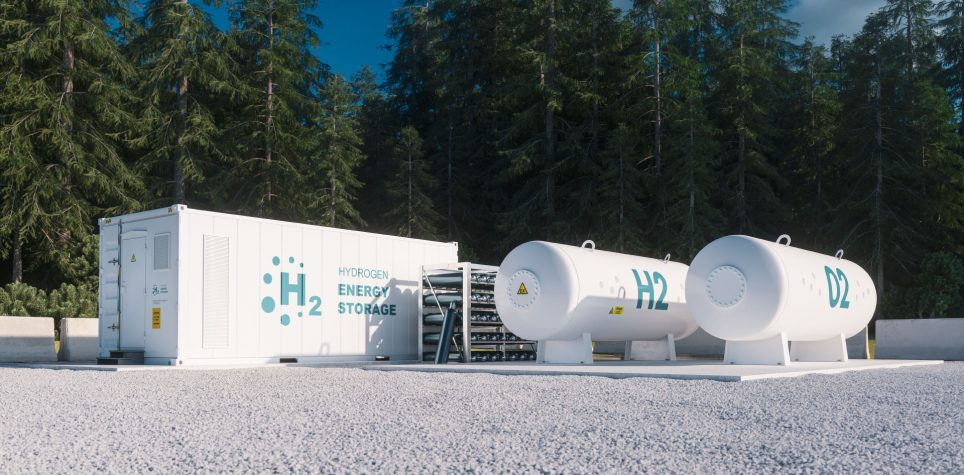Global Trends
According to the International Energy Agency (IEA's) Hydrogen Projects Database, around 2000 green hydrogen production demonstration projects have been announced worldwide. These projects are predominantly located in Europe and Australia, but an increasing number are being planned in Africa, China, India, Latin America, and the United States. In terms of manufacturing capacity, the electrolyzer capacity has reached nearly 11 GW, and the fuel cell manufacturing capacity stands at 15 GW, with South Korea, China, and Japan being the largest supply markets.
India’s electrolyzer manufacturing capacity is currently around 0.8 GW per year, expected to expand to 12.7 GW per year by 2030, although this still falls short of the 60-100 GW capacity needed to meet ambitious production targets. Efforts are underway to indigenize electrolyzer components, with 60-80% of component costs potentially manufacturable domestically, especially balance of plant (BoP) components
Despite global headwinds that have increased near-term renewable levelized costs of hydrogen (LCOH) estimates by 30% to 65%, to 4.5 to 6.5 USD/kg, it’s projected that electrolyzer costs could decrease by as much as 45% by 2030 and 70% by 2050 compared to today.

Over the past few months, India’s has made multiple announcements in developing its hydrogen economy, ranging from Production Linked Incentives (PLI), National Green Hydrogen Mission and Hydrogen standards. India’s robust biomass potential of 750 MMT/year, with a surplus of 230 MMT/year, can potentially be a significant source fo green hydrogen production and contributes to the nation’s green energy footprint, accounting for 32% of total primary energy use.
India’s green hydrogen market was valued at approximately USD 1.4 billion in 2024 and is projected to grow at a CAGR of about 39.5% from 2025 to 2033, reaching USD 25.3 billion by 2033.
Green hydrogen production capacity awarded currently stands at around 412,000 tons per annum, with plans to scale up significantly to meet industrial demand in refineries, fertilizers, steel, shipping, and long-distance transport sectors.
Publications
IH2A Position
India has the potential to produce green hydrogen from 15-20 GW installed capacity by 2030[1] from expected renewable energy excess capacity and resultant curtailment (with a 450 GW national RE target by 2030) - with a significant proportion expected to be directed towards hydrogen production. Capital cost of electrolysers (estimated 2030 electrolyser capital cost at USD 250-300/kW) and Balace of Plant (BoP) Equipment is are expected to be a key the only hurdles to hydrogen commercialisation. Electrolyser capital costs, collectively estimated at USD 5-6 Bn, is expected to be privately funded with public funding being utilised for hydrogen offtake and infrastructure. This is an opportunity to create 3-4 large Indian electrolyser manufacturing companies in India.
IH2A’s ‘Hydrogen Equipment Manufacturing and Services’ report estimates the addressable market for Indian-manufactured hydrogen equipment to be worth USD 45-50 bn by 2030. This market assessment includes all hydrogen production plant equipment, including electrolyser and balance-of-plant equipment, that can be deployed in India, and exported from India to the Asia, Middle East and Africa region, building India as a supply chain hub for future green hydrogen projects. This is expected to represent at least 162,000 direct and indirect jobs that would be created because of developing the hydrogen economy in India.
IH2A is working towards building the Hydrogen Economy in India, through the production and consumption of green hydrogen and its derivatives, in line with the targets set by the National Green Hydrogen Mission (NGHM), which aims for a 2030 production target of 5MMT of Green Hydrogen, of which 1.5MMT would be Domestic Consumption/Offtake of Green Hydrogen.
Workgroup 1 Lead
NCL-CSIR (Special Invitee)
Join Workgroup 1
Hydrogen Production and Electrolyser/Fuel-cell Manufacturing
Suggestions to Workgroup 1
Hydrogen Production and Electrolyser/Fuel-cell Manufacturing







